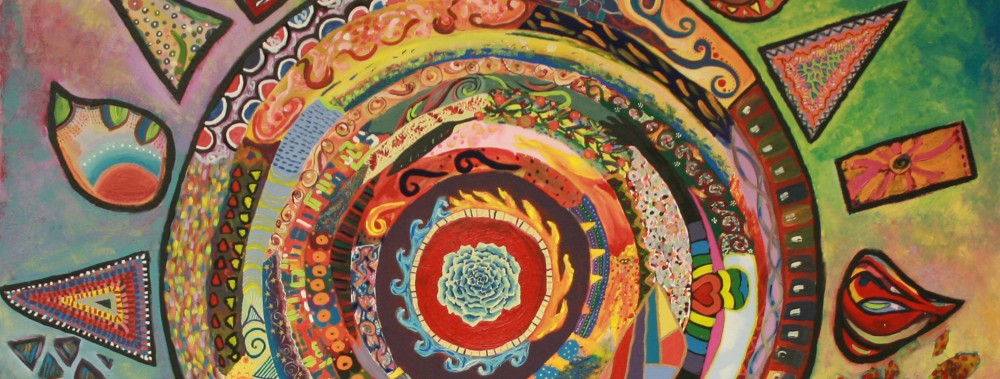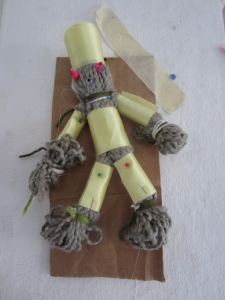By: Lisa Lamoreaux
For my intervention with Cambodia Women’s Crisis Center (CWCC), I chose to introduce “Worry Yarn Wrap Dolls” with the staff and clients. Symptoms of trauma often include feelings of guilt, shame, self-blame, anxiety, and/or fear. The intention of this art directive was to help the participants to identify these concerns and disconnect from their issues or worries, allowing for “emotional energy” to be freed up (Nieves-Grafals, 2005, p. 196). The dolls would be a container capable of safely holding the fears, negative thoughts, or worries of the participants who made them.
Before leaving for Cambodia, I gathered what I thought would be a sufficient amount of supplies for making the dolls, including a bag of yarn donated by someone in the community. Upon arriving at the CWCC and seeing how many participants there were on the first day, I began to worry that I did not actually have enough yarn for everyone to make a doll. I was leading the “Worry Wrap Doll” intervention the following day and had no time to go buy more yarn. At this point, I began to get even more worried. The only thing I could do was try to alter the doll so it required less yarn to make. After brainstorming and changing things around, I had to simply wait for the next day to come and hope that we would not run out of yarn. When the time came to make the dolls, I introduced the intervention and everyone began working. As I walked around and helped the participants create their dolls, I forgot all about my worry and was able to have a great time engaging with the group members. In the end, we had yarn left over and everyone got the chance to create their own beautiful and unique dolls.
In leading the intervention for the “Worry Wrap Yarn Dolls” with the participants of the CWCC, I realized the importance of being flexible. I also learned to trust that things have a way of working themselves out and that maybe I didn’t need to worry so much. While at CWCC I had the great honor of meeting a wonderful group of people. I saw incredible resilience, strength, and humility. I felt so much joy when welcomed so openly into such an amazing community. I came away from this experience feeling I learned much more than I ever imagined I would.
Nieves-Grafals, S. (2005). Brief therapy of posttraumatic stress disorder in refugees. In T. A. Corales (Ed.), Trends in posttraumatic stress disorder research (p. 196). Hauppauge, NY: Nova Science Publishers.
Please note that while individual members have varying views on topics discussed in our blog, NCAS-I as a whole honors multiple perspectives, within respectful reason, and does not aim to censor material shared in our blog writings. So please keep this in mind while reading our blogs. And please feel free to add your perspective too.

